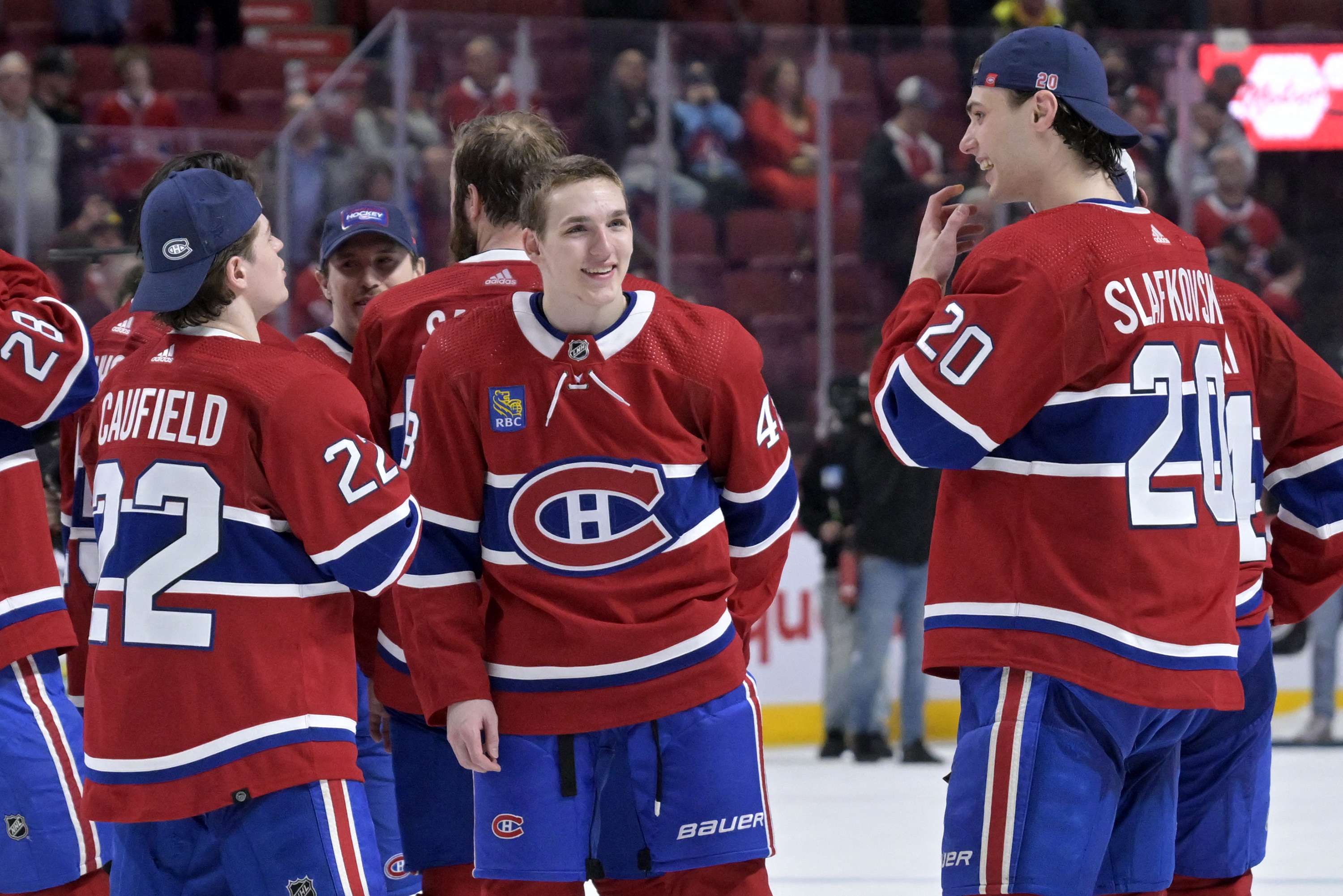Fantasy Hockey Prospect Breakdown: Cole Hutson looking to chart his own path

Cole Hutson was drafted 43rd overall by the Washington Capitals in the 2024 NHL draft. 19 spots earlier than his brother, Lane Hutson went in the 2022 NHL draft to the Montreal Canadiens. Obviously, there is a tremendous excitement about another Hutson brother after the heads Lane has turned. Even though Cole has some similarities to his older brother, there are differences between the two. There also remain questions about how translatable Cole’s game will be to the NHL. We’ll dig into those questions and more in this prospect perspective.
Like Lane, Cole is an undersized left-handed defender who has above-average offensive capability. He is already an inch taller than his brother was at the same age. Both had significant roles for the United States National Team Development Program (USNTDP). Cole had 51 points in 51 games played for the USNTDP in his draft season while Lane had 53 points in 60 games played.
It would be tempting to automatically assume that Lane has better offensive acumen based on the point totals, but he had far greater talent around him that season. These names include Isaac Howard, Logan Cooley, Frank Nazar, Rutger McGroarty, Cutter Gauthier, and Jimmy Snuggerud. All of those forwards had more points than Lane Hutson.
Cole Hutson on the other hand had James Hagens, Cole Eiserman, Teddy Stiga, Brodie Ziemer, Kamil Bednarik, Max Plante, and Christian Humphreys to pass the puck to. Some good players, but not exactly the talent level that Lane had. It could be argued that Cole Hutson did more with less than his brother Lane.
One other major difference between the Hutson brothers is that Cole is a June 28th birthdate and Lane February 14th. This means that Cole is significantly younger for his draft class than Lane. This can be interpreted to mean that you could expect more growth beyond his draft season for Cole than you could for Lane. Of course, we’ve already seen the massive strides Lane has taken, perhaps Cole could take as many or more.
Looking at Hutson’s tracking data from Mitch Brown, you see a strong profile at both ends of the ice in his draft minus one season. The defensive game was particularly impressive, as were his expected primary assists per 60 minutes (xA1/60). In 2023-24, his expected goals per 60 minutes (xG/60) caught up to his xA1/60, though his defensive game fell off a bit. He was able to improve his offence involvement, game score per 60 and expected goal build-up in his draft season.
Looking at the Hockey Prospecting between Cole and Lane Hutson, the edge goes to Cole. Cole’s strong production in his draft minus one season garnered the same NHL equivalency in the model and pumped up his star potential to 69%. For Lane, his draft minus one equivalency was much lower, leading to a slightly lower draft season star potential. Obviously, we now know that Lane has continued his meteoric rise through college and we don’t quite know what will happen with Cole.
The pNHLe model by Mason Black is a little less optimistic about Cole Hutson. His equivalency went down this season after being 90 in his draft minus one season. 60 is still a high equivalency for a defender, but it’s quite low compared to his brother Lane, who has hovered above 100 for the past two seasons.
The Fantasy Hockey Life player card for Hutson shows that he is a bit more physical than some might think. His hits per 60 minutes were in the 90th percentile for the USHL. He also shoots the puck quite a bit compared to the rest of the league. PIMs are bad in this model so his 30th percentile could be interpreted as beneficial if your league counts PIMs as a positive. Hutson is more than just points-only options with a higher peripheral floor than you might have thought.
To learn more about Cole Hutson, I reached out to scouts who know him really well:
Hadi Kalakeche, QMJHL and crossover scout for EP Rinkside:
“I’ll start this off with a disclaimer: Cole is not his brother — as much as the two share stylistic resemblances. He’s a different player in his approach; while Lane controls play from the blue line, Cole controls play on zone entries. He manipulates his pace by slowing down, accelerating and stopping up when carrying the puck into the offensive zone, and from there, he has the vision and hands to create an opening and feather the puck to an open teammate. From the blue line, Cole mainly relies on activations to create, rather than walking the blue line, using head fakes and opening a shooting lane like his brother does.
I’ve been wrong on both ends of the spectrum, whether I’ve hedged my bets on prospects like him or doubted them. That being said, I don’t think Hutson’s current style lends itself well to the NHL’s model of offensive creation — on top of that, his defensive reads are particularly difficult, and his skating doesn’t compensate enough for his lack of size. I have my doubts, but when he’s on, Hutson’s mesmerizing. I’d give it another year before I make up my mind. NCAA tape will be key to figuring out what Hutson’s path forward looks like.”
Mitch Brown, director of North American Scouting at EP Rinkside from the 2024 guide:
“Just like his brother, Cole Hutson has the one-on-one game at the point down to a science. A lateral slide, a hesitation move, and he gets past the first layer of defence. He drives down the faceoff circle, fakes a shot, and sends the perfect cross-ice pass to the talented shooter sitting inside space on the other flank. The ingredients varied during the season but it’s that exact recipe that made him the all-time scorer from the back-end in USTNDP’s history this season.
More of a read-and-react player than his brother, Cole was guilty of forcing a lot of plays early in the season. He lost the puck in dangerous spots and didn’t have the motor to catch up to his mistakes. This trend and the lack of high-end playmaking instinct worried our team.
If he continues to develop his work ethic, motor, and breakout game, Hutson could have a similar ascension in the college ranks as his older brother and become a top-four, offensive specialist for an NHL team down the line.”
Cole Hutson may not have the same trajectory as his brother Lane, but he certainly is an exciting prospect. His historic production at the USNTDP should automatically garner excitement from dynasty poolies. He will have to show he can continue to produce in college, but if he can, there is reason to be optimistic about his long-term projection. The Capitals don’t have an heir-apparent in their system for the top power-play quarterback. He could easily fill this role in a few years, depending on how he develops in the NCAA.


